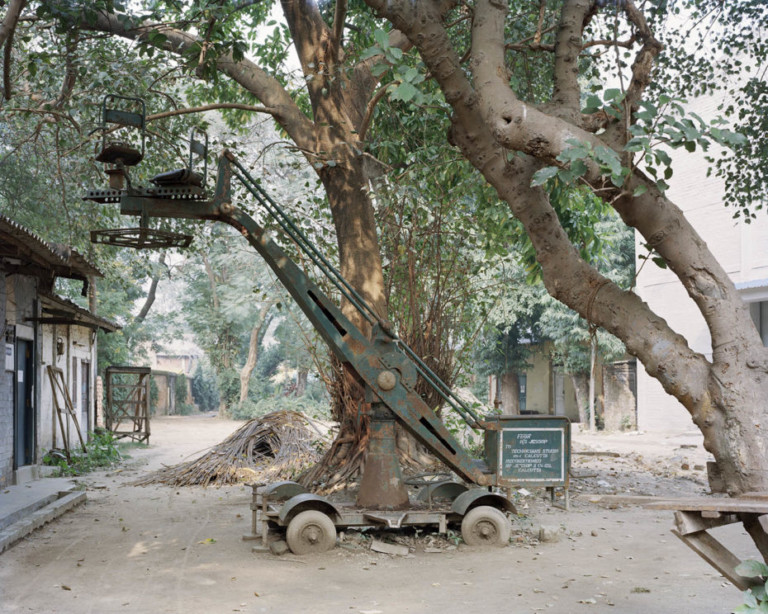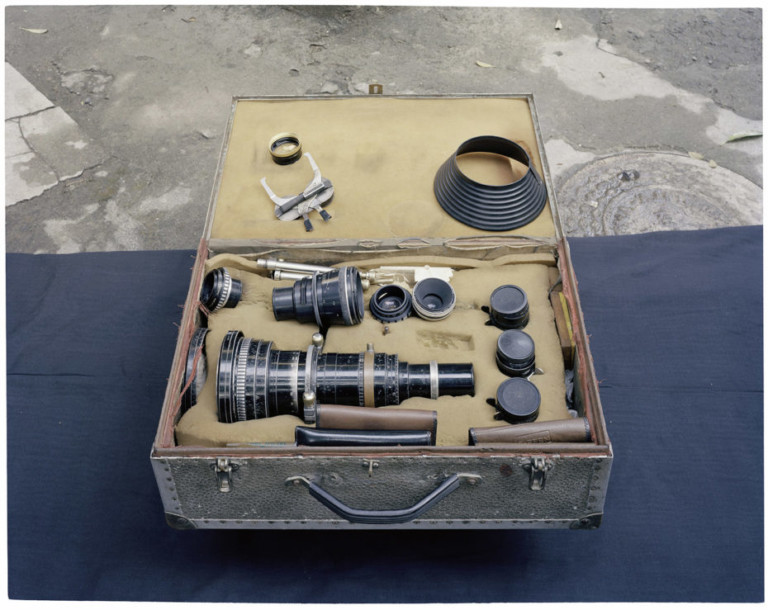 Nandita Raman exhibition records dilapidated studios of famous filmmakers
Nandita Raman exhibition records dilapidated studios of famous filmmakers
India Post News Service
In the final scene of the 1959 Guru Dutt classic ‘Kaagaz Ke Phool, the hero, remembering his glorious past, dies in the director’s chair in an empty film studio, a lonely and forgotten man. His films equipment if seen today would be like what visual artist Nandita Raman has recorded in photographs of abandoned cinema halls and old films production equipment of celebrity film makers like Satyajit Ray, Ramananda Sengupta and Ritwik Ghatak.
A fascination for the old-world charm of the single-screen cinema led Nandita Raman to look back at her childhood in Varanasi, where she spent a lot of time at Chitra Talkies, a cinema owned and run by her mother’s family. She hadn’t been to Varanasi in nearly a decade and when she went back to the cinema, she was shocked by the emptiness of the familiar space. The uniqueness of the cinema revealed itself to her then. “That was my moment of commitment—to the curiosity,” says Raman, explaining why she decided to explore the idea of single-screen cinemas in India seriously.
“When I went back to Kolkata in 2013 a few years after photographing the cinema halls there, it was evident to trace the footsteps of film backwards from the cinema hall to film studio. The old filmmaking gear was stored in corners of the shooting floors and in dark rooms shrouded under blankets. When this equipment was uncovered, I sensed the spirit of experimentation and whim of post independence (50s and 70s). It is this spirit that I pursued while photographing these machines of optics and sound,” says Nandita.

Sepia Eye is presenting their first solo exhibition of Nandita Raman entitled, ‘Do Not Forget Me’ at 547 West 27th Street, #608, New York till November 10. It features her works from series, Film Studio (2014) and Cinema Play House (2006-2009).
‘Do Not Forget Me’ borrows its title from a short story by Alexander Kluge (Cinema Stories, 2007) about a German actor’s desire to be loved and remembered forever. The muted color works in Film Studio touch on the objects that produced lasting memories: cameras draped in faded fabrics, well-worn ladders— shrouded remnants of a once teeming industry left in the dust. Raman’s photographs of these objects, tools, and spaces that at one time rendered the imaginary visible, serve as mnemonic devices that spark anecdotes and recollections of the history of Indian cinema.
Satyajit Ray’s camera
Satyajit Ray, the famous filmmaker, was known amongst his friends and the industry as Manik-da. In his camera, there appear to be three floating cameras enveloped in a haze achieved by using the image multiplier filter from the floating camera’s kit. These filters were once popular for depicting fantastical dream sequences in Indian films. The camera he shot on was forever known as Manik-da camera. As with past photographic series, Raman applies her almost decade-long exploration of temporality, impermanence, and the unreliability of memory to Indian cinematic history.
At Technician’s Studio founded by the legendary cinematographer Ramananda Sengupta, we see where Satyajit Ray’s Pather Panchali and fellow Bengali filmmaker, Ritwik Ghatak’s films were laced with sound, the console covered in a thin layer of dust and a towel casually draped on the back of the editor’s chair. In another image, Manik-da’s chair quietly sits in the exterior grounds of Image India, its white wrappings fluttering in the breeze.
The color photographs from Raman’s Film Studio (2014) compliment her earlier study Cinema Play House (2006-2009), wherein she traveled through India creating a series of black-and-white, formally composed photographs depicting the country’s slowly disappearing single-screen theatres. Raman focused her lens on the architectural anomalies and human touch that set these spaces apart from larger multiplex theaters that threaten their existence.
About the Artist
 Nandita Raman (b. 1980,Varanasi, India) works with a range of mediums including photography, video, drawing and language. Her work has most notably been exhibited at George Eastman Museum (Fall, 2017) Center for Documentary Studies, Duke University (2010), and Columbia University (2012).
Nandita Raman (b. 1980,Varanasi, India) works with a range of mediums including photography, video, drawing and language. Her work has most notably been exhibited at George Eastman Museum (Fall, 2017) Center for Documentary Studies, Duke University (2010), and Columbia University (2012).
Her cinema hall photographs are currently on view at The Museum of the Moving Image from September 15, 2018 – January 27, 2019. This solo exhibition of Cinema Play House includes a film program presented by Priyadarshini Shanker, PhD Candidate and Adjunct Faculty at NYU and Columbia University.
Raman has curated exhibitions including “I need my memories. They are my documents” at sepia EYE, NY (2015) and Riktata [emptiness] at Kriti Gallery, Varanasi (2017). She is a recipient of Alkazi Foundation’s Documentary Photography Grant (2016), and residencies at Baxter St Camera Club of New York (2017) and Stanica Zilina-Zariecie, Slovakia (2013).
Raman is a graduate of the Bard College-International Center of Photography’s MFA program and teaches at SUNY Purchase College where she continues to write and lecture on photography and art.
Collections holding her work include the George Eastman Museum, Kiyosato Museum of Photographic Arts, The Snite Museum of Art, Library of ICP, & Bard College, and many private collections.
Courtesy sepiaEYE







